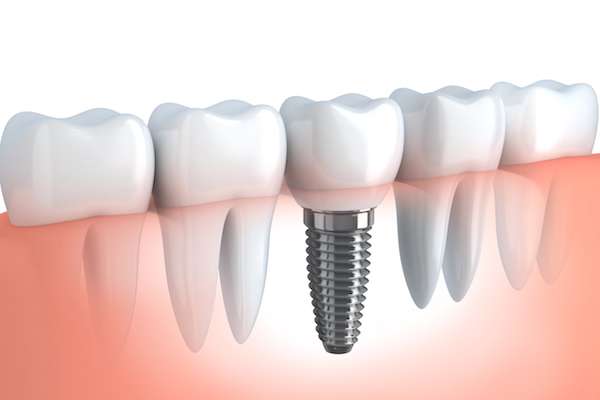 Patients may feel overwhelmed when a dentist suggests dental implants. The process can sound intimidating, but fortunately the practice of providing patients with a brand-new smile has been studied, modernized, and improved over the past several decades. Not only can patients feel confident smiling frequently in public again, but their oral health and daily function may be vastly enhanced with implants.
Patients may feel overwhelmed when a dentist suggests dental implants. The process can sound intimidating, but fortunately the practice of providing patients with a brand-new smile has been studied, modernized, and improved over the past several decades. Not only can patients feel confident smiling frequently in public again, but their oral health and daily function may be vastly enhanced with implants.
Why get dental implants
Replacing teeth is the number one reason for getting implants. Such a replacement offers a number of underlying positive effects:
- Improved oral health by being able to chew properly and expand on a previously limited diet
- A fully restored, whole smile
- Boosted self-confidence in smiling and speaking
- Durability that usually outlasts that of other appliances, such as dentures and dental bridges
What to expect from the procedure
Dental procedures are slightly different for every individual. However, these six steps represent the standard for receiving dental implants.
Step 1: Assessments
All patients must go through a list of assessments to make sure they are healthy enough to be a candidate for surgery. The jawbone must be strong, healthy, and able to heal after surgery. The patient cannot have medical history that may compromise the procedure or potentially cause complications afterward. In some cases, additional steps of removing damaged teeth or bone grafting must be included in a patient’s treatment plan.
Step 2: Initial surgery and post placement
The surgery for placing the implant post is fairly simple. The gum is cut open to expose the jawbone, and small holes are drilled where the posts are then placed. The post is usually secured deep in the bone to encourage bone growth and bonding and to ensure proper support for the future tooth.
Step 3: Healing
After surgery, the patient must allow time for the jawbone and gums to heal completely. During this time the bone will heal around the post and create new, functional support (a process called osseointegration). Once the healing process is complete, the abutment can be placed on the implant post.
Step 4: The abutment
Another minor surgery may be necessary to reopen the gums to expose the post. The small abutment is connected to the post. Surrounding gum tissue is carefully closed again, this time around the abutment. If the gum tissue grows over the piece, the artificial tooth cannot be placed.
Step 5: Placing new teeth
Finally, a tooth impression is taken to create the crown. More healing time may be necessary if a patient’s jawbone is not yet strong enough to endure pressure on the new tooth. Once it is ready, the tooth is secured to the abutment.
Step 6: Aftercare
Patients may need to avoid hard foods following the procedure. Some may experience side effects like swelling in the face, gum bruising, and pain where the implants were placed. Medications may be prescribed until the pain subsides.
Conclusion
A dentist can provide all details about dental implants and the procedures involved. Each patient has a different care plan, so discussing individual needs is the easiest way to see what this process will look like for you.
Request an appointment or call Core Dental Group and Implants Center at 617-822-3400 for an appointment in our Quincy office.
Related Posts
Dental implants are becoming a very popular choice for replacing missing teeth. Many patients ask about implants because they are known to look and feel the most like natural teeth. Any person could need to replace a missing tooth or teeth for a variety of reasons. You may not have kept up on your oral hygiene…
A consistent oral hygiene routine is necessary for anyone who has dental implants. While tooth decay cannot affect implants themselves, the area still requires routine cleaning to prevent gum disease and even infection. Failure to do so can also cause staining of the prosthetic tooth and an unsightly appearance. If the tissues surrounding the implant…
Choosing to invest in dental implants is no minor decision. The procedure requires small surgeries, and the overall process can last months, requiring dedication to restoring oral health and a full smile. The results, however, are well worth the time and effort for most patients.Before deciding to commit, patients first need to understand the different…
